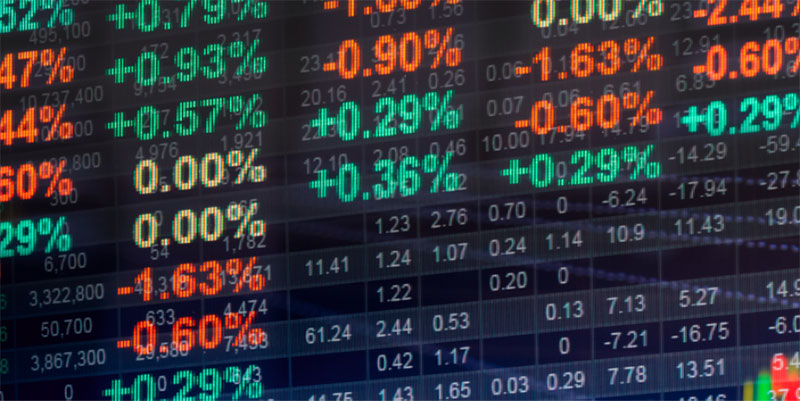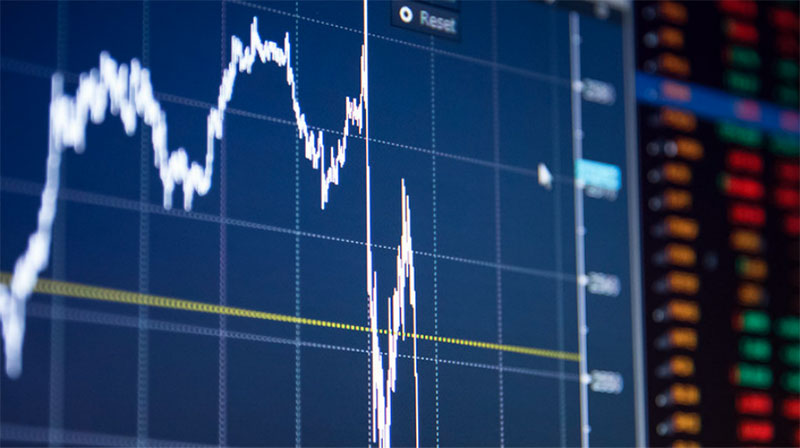Difference Between Dow, Nasdaq and S and P 500
Nov 03, 2023 By Triston Martin
If you keep up with the stock market or business headlines, you're probably familiar with the terms Dow Jones Industrial Average (DJIA), Standard & Poor's 500 Index, and Nasdaq Composite Index. Each of the three indices is often used as a proxy for the day's market performance. Many investment tools are based on tracking their day-to-day price changes.
Aside from the financial language, it can be challenging, if not downright confusing, to differentiate between the performance of the various indexes and products. Continue reading to learn more about the three indexes, how they compare, and how you can use this information to make informed investment decisions in today's market.
Comparison of the Nasdaq Composite, the S&P 500, and the Dow Jones
The Nasdaq Composite, the S&P 500, and the Dow each have unique characteristics. The first is their scope of coverage and the industries that make up the index. More industries are represented in the Nasdaq Composite and S&P 500 than in the Dow.
The second distinction is how they determine how much weight to give each company in the index. When calculating their respective weights, the Nasdaq Composite and the S&P 500 employ market capitalizations (market caps), while the DJIA uses the stock price of each component.
One last dissimilarity is found in the selection criteria employed to determine which variables would make up each index. Compared to the other two, the Dow is more value-oriented and considers both quantitative and qualitative factors when deciding whether or not a stock should be included in its index.
NASDAQ Composite Index

When it first debuted in 1971, the Nasdaq Composite Index was pegged at 100 and comprised nearly all companies trading on the Nasdaq stock market. The fact that a company is publicly traded on the market is a requirement for inclusion in the index.
The Nasdaq Composite is a market cap-weighted index with over 3,000 stocks included in its calculation. The performance of the technological sector is reflected in the performance of the composite, which in turn reflects the performance of the exchange. This is because the sector accounts for about half of the index's total weight. According to data collected in September of 2021, 46% of the index's total weight was held by the top 10 corporations. These companies were all technological behemoths.
The Nasdaq Composite's value has increased in tandem with the rise of the technology industry. The Nasdaq Composite, for instance, reached a record high of 5,046.86 on March 9, 2000, amid the dotcom boom that swept tech equities at the turn of the century. Soon after, it dropped by more than 4,000 points, and it took 15 years to recover to the 5,000 level. The index's value skyrocketed in 2021, hitting a record high of 16,057.44 on November 19 after rising tech valuations and the stock market boom caused by the epidemic.
Market Index of the Dow Jones (DJIA)

The Dow Jones Industrial Average (DJIA) is the oldest of the three indexes, having been founded in 1896 with an initial group of 12 components. The Dow, as it is commonly known, has the fewest members of any major stock market index, with only 30 companies making up the index. The value of the Dow is calculated each day based on the closing prices of the stocks that make up the index.
Because of this, the value of the Dow will be significantly affected by a single high-priced stock. The Dow is classified as a blue-chip index because it follows the movements of large, well-known corporations that are often assumed to represent a significant portion of the American economy.
However, this is by no means exhaustive. In particular, the Dow contains no utilities or transportation businesses. The Dow Jones Utility Average and the Dow Jones Transportation Average follow these sectors. In September 2022, the Dow included shares from nine industries, including IT, energy, and finance.
The criteria used to determine whether companies cut inclusion in the Dow include quantitative and qualitative measures. The companies included have a solid track record of success and a positive reputation in their respective markets.
Which index would be the best to put money into among the S&P 500, the Nasdaq Composite, and the Dow? There is a close relationship between the index valuations in all three markets. So, the three tend to go in the same direction, up or down. There is some consistency between indices regarding gains and losses, but the magnitude varies. Any given index may or may not be the best fit for your portfolio, depending on your investment aims and methods.
-
 Mortgages Dec 09, 2023
Mortgages Dec 09, 2023An Assumable Mortgage: What Is It?
In a financing arrangement known as a "assumable mortgage," the terms of an active mortgage are transferred from the present owner to the buyer. The buyer can avoid getting their own mortgage by taking on the remainder of the previous owner's debt. Although there are some unique variables to keep in mind, many loans can be assumable mortgages.
-
 Investment Dec 27, 2023
Investment Dec 27, 2023S and P 500 Index Funds
Index investing has seen momentum in the last decade as passive funds often beat their active counterparts due to cheaper costs. In the world of index investors, the S and P 500 has been the most popular benchmark index to follow.
-
 Mortgages Jan 21, 2024
Mortgages Jan 21, 2024Review of Upstart Car Loans
To those with good to exceptional credit, Upstart Car Loans is a lending platform offering vehicle loans. Borrowers' creditworthiness is determined, and their interest rates are set using AI and machine learning algorithms developed by the firm. Upstart Finance provides loans between $1,000 and $50,000 with interest rates between 3.69% and 35.99%. Options for car loan refinancing, fast funding, and a soft credit inquiry that won't hurt your score are all features of this site. There may be better choices than this if you need a loan for a more costly automobile or have a low credit score.
-
 Know-how Nov 20, 2023
Know-how Nov 20, 2023Locating Foreign Currency Exchange Services: A How-To Guide
Find a foreign currency exchange near you with our comprehensive guide. We provide information on the popular exchange rates and locations.
